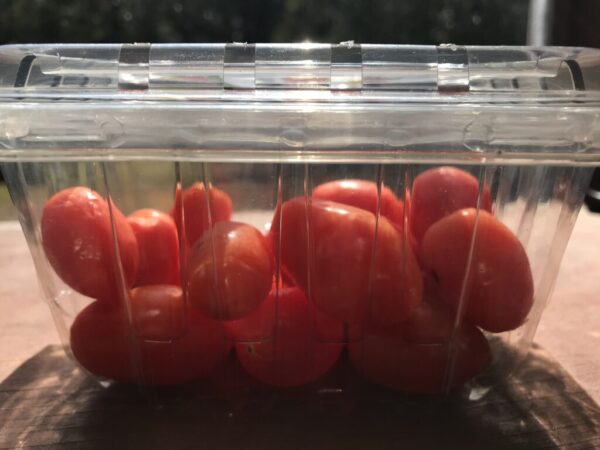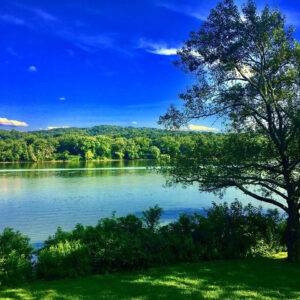
The late Molly Ivins used to say “The first rule of holes is, when you’re in one, stop digging.”
Well, we’re in a pretty serious hole now, and I’m actually not talking about climate change. I’m talking about plastic pollution. No, not the pollution caused by making plastic, though that’s considerable. Nor the pollution caused by drilling, fracking, piping and cracking the fossil fuels used to make plastic, which yields another plethora of pollution. And yes, producing plastic does also yield climate pollution. What I’m talking about here is the pollution of our oceans with enormous quantities of plastic waste. And according to this National Geographic article, 90 percent of the waste collected in last year’s annual beach cleanup was single-use plastic related to food. Wrappings, plastic forks and spoons, cups and lids, bottles, grocery bags.
This is also a major part of the market the industry is hoping for in its quest to build a huge petrochemical complex along the Ohio and Kanawha rivers—as well as expanding the one on the Gulf (known as Cancer Alley), and many others.
 The National Geographic article has a picture of individually plastic-encased cucumbers, which strikes me as an absurdity. But it says produce will stay fresh for three days bare, 14 days if wrapped in plastic. So, it’s not hard to see why so much is used by the grocery industry.
The National Geographic article has a picture of individually plastic-encased cucumbers, which strikes me as an absurdity. But it says produce will stay fresh for three days bare, 14 days if wrapped in plastic. So, it’s not hard to see why so much is used by the grocery industry.
But here’s the thing. For a long list of reasons, our global food and agriculture systems need drastic change. In large measure, what we need is to undo the changes of the last century, but not entirely. There have been some discoveries in agronomy that will enable the farmers of the future to grow crops on less land with fewer inputs than in the past—at least where climate change doesn’t make farming too chancy altogether.
We need to re-localize our economies, and the most critical item in our trade, food, is at the top of the list. The current system involves vast regions dedicated to growing a single item—often genetically identical varieties of one species—which are traded globally. This can only make sense in the world we imagined we lived in during the last century—one without limits, with limitless fuel for shipping, limitless sinks to absorb carbon and air pollution, and an endless supply of poor people in the global South to do most of the labor for very low wages so ordinary people in the rich nations can have cheap food and the owners can get rich.
This system relies on enormous ships plying the oceans, burning tremendous quantities of the world’s dirtiest fuel—measured not in miles per gallon but in gallons per mile. Then there are the trucks constantly streaming down our highways to bring crops thousands of miles from where they’re grown or processed to… where they could be grown, but aren’t, because transportation is apparently virtually free.
It also relies on a system in which farmers grow one, or perhaps two crops, year after year, on vast acreages. This is a recipe for infestation, and so they use ever more deadly chemicals to kill the pests and weeds. In the case of livestock, packed in CAFOs sometimes up to their bellies in their own manure, this means daily antibiotic use—which is rendering antibiotics less reliable for human use. The concentration of manure, and the heavy use of both fertilizer and pesticides, pollutes waterways and creates dead zones off the coasts. The annual, or more frequent tilling also is bad for the soil organisms that are a key part of healthy farming.
This agribiz model emits a great deal of greenhouse gas, leaves a couple of billion people poorly nourished, creates a lot of pollution, commits massive animal cruelty, and underpays its labor…yes, there is a better way.
A new (old) system in which farmers are much more numerous, managing smaller farms with multiple crops, little or no chemical use, keeping their soil healthy and fertile with cover cropping, compost, manure, mulch and rotational grazing, can feed people in their own regions with much less in the way of transport costs (including the non-monetary costs we all pay). Many farmers are making changes to move toward a healthier, more diverse management plan, but they’re getting very little help from the likes of USDA.
Now, back to the issue with which this piece started: plastic pollution of the oceans. Most of it comes from food packaging, and is necessitated by the long gap between harvest, being shipped perhaps to the far side of the planet, then on to a warehouse, then to the grocery store—perhaps with a side visit to a factory where the raw ingredients are made into something likely less wholesome but higher priced—we’re getting into weeks, here.
The solution is local agriculture, which also means a mixed system. Multiple and frequently changing crops can be raised with less trouble from pests, thus necessitating less chemical controls; keeping some wild areas also enhances pollinator and predator survival (meaning predator bugs, birds, toads, snakes, lizards). A farm growing a variety of crops, including perennial crops like fruit trees, is more resilient in the face of climate chaos. Such farms can sell their crops soon after harvest, locally, with no need for plastic.
We do not need to trash the Ohio River with a hideous, smelly petrochemical complex to make plastic to coat our foods (and leave residue in our bodies) and then end up choking the oceans. There is a better approach to food systems, and a better approach to economic development in our area: multiple small businesses, many making alternatives to plastic.
Let’s not build the Hub!











